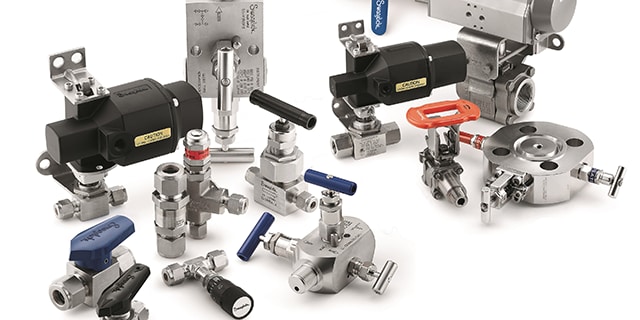Valve Selection

Valve Selection
Matching valve type to function is the first and most important step in the valve selection process. It is not unusual in the field to see the misapplication of valves, such as a ball valve used for throttling flow. In some cases, the mismatch can be catastrophic, say, if a ball valve were used in a high-pressure oxygen system. With a source of ignition, the sudden burst of oxygen – enabled by the fast opening of the valve – could lead to an oxygen fire. What else should you consider?
Know your application
When choosing a valve, you must have certain pieces of information in hand, including the chemical composition of the system media and the full range of pressure and temperatures over the course of the valve’s life. Make sure your valve choice can accommodate these parameters. Don’t go with hunches or approximations. Consult the product data.
Check for material compatibility
It is possible to have the right valve but the wrong materials of construction. Valves are often made from a standard set of materials, but there are alternatives. You should always check the product catalogue to identify temperature and pressure ranges, as well as compatibility with different system media (chemicals). When in doubt, consult your manufacturer.
Know your maintenance schedule
Different valves have different maintenance schedules, and your system parameters, including the number of times the valve is cycled, will affect this schedule. The valve’s maintenance schedule needs to be manageable for your maintenance team. This seems like an obvious point but it is often overlooked. Are you willing to service that valve once every 20 days when it is 100 feet in the air?
Understand pressure drops
Whenever you add a valve or other component to your system, it usually produces a drop in pressure. You need to be aware of the cumulative pressure drop. Otherwise you may end up with too little pressure at a certain point in the line. Every valve is rated with a flow coefficient, expressed a Cv. The number describes the relationship between the pressure drop across an orifice, valve or other assembly, and the corresponding flow rate. The higher the Cv, the lower the pressure drop. A ball valve of a given size will produce very little pressure drop, whereas a needle valve of the same size will produce a significant pressure drop.
Consider cost of ownership
The true cost of a valve is not its purchase price. The true cost is the purchase price plus the cost of owning and maintaining or replacing that valve over time. To calculate the cost of ownership, you must know how long a valve will operate in your particular system between maintenance checks. Maintenance costs must be figured not only in terms of replacement parts, but also in labor and downtime. Note that some valves are much easier to service than others. Some can be serviced in place; others must be removed from the process line. Also, given your valve choice, what are the chances of unscheduled maintenance and downtime?
Want to see more? Check out our tutorial on valve selection, or give us a call at 800.332.6693 to get started.
Recommended Reads |
